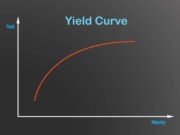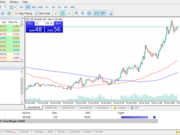What is a ‘Range’
The difference between the low and high prices for a security or index over a specific time period. Range defines the price spread for a defined period, such as a day or year, and indicates the security’s price volatility. The more volatile the security or index, the wider the range. The range expands over greater time periods; a security’s daily range will generally be smaller than its 52-week range, which in turn will be tighter than its five-year or 10-year range. Technical analysts closely follow ranges since they are very useful in pinpointing entry and exit points for trades.
Explaining ‘Range’
The range depends on the type of security; and for a stock, the sector in which it operates. For example, the range for fixed-income instruments is much tighter than that for commodities and equities, which are more volatile in price. Even for fixed-income instruments, a Treasury bond or government security will typically have a smaller trading range than a junk bond or convertible security.
Further Reading
- The long-range dependence paradigm for macroeconomics and finance – books.google.com [PDF]
- Range volatility models and their applications in finance – link.springer.com [PDF]
- Stock market prices and long-range dependence – link.springer.com [PDF]
- Trends in park tourism: Economics, finance and management – www.tandfonline.com [PDF]


































